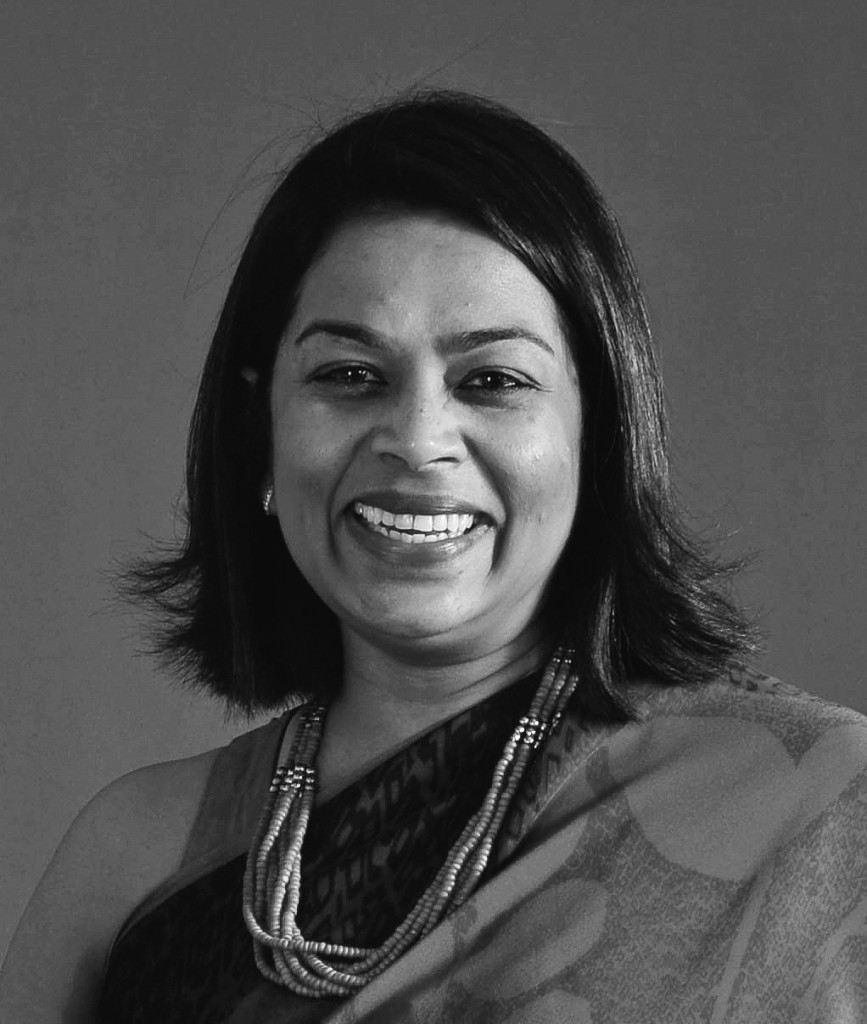#36 RAMANIKA UNAMBOOWE
DGM, COMMERCIAL BANKING, NTB
Around 30% of NTB’s loan book is committed to corporate lending and the share has grown over the last year. Most of Ramanika Unamboowe’s career has been focused on corporate banking. Her career started at Sampath Bank from where she moved to the Sri Lankan unit of American Express and then Nations Trust Bank (NTB).
Success in corporate banking often comes down to customer relationships and the ability to meet their specific needs. NTB’s business strategy revolved around its corporate banking unit until 2003 when it forayed in to consumer banking and a few years ago also began catering to the mid market and SMEs.
#36 Keshini Jayawardena
DGM, RETAIL AND SME BANKING, NTB
SME banking is generating strong revenue growth for Nations Trust Bank. Jayawardena heads the SME and Retail banking units at NTB, two growth areas for the institution. Jayawardena joined NTB to complete the merger with the leasing firm MLL and then headed leasing for five years. Since 2011 she heads NTB’s retail and SME banking.
NTB now has 90 branches and plans to grow that to around 140 over the next few years as it pushes services in to towns outside Colombo where it’s easier to grow deposits and lending opportunities are also now plentiful. NTB is transforming itself to reach a wider set of customers including wealthy ones from towns outside Colombo.
#38 DR. RANEE JAYAMAHA
CHAIRPERSON, HNB
 HNB is the second largest private commercial bank as measured by balance sheet size. Former Central Banker Ranee Jayamaha has been HNB Chairman since March 2011 and also plays a visible role in the bank’s management.
HNB is the second largest private commercial bank as measured by balance sheet size. Former Central Banker Ranee Jayamaha has been HNB Chairman since March 2011 and also plays a visible role in the bank’s management.
Like most commercial banks HNB has also found that margins are shrinking and unlike other banks HNB is also challenged with declining net interest income. In the September quarter of 2014 net interest income was down 4.6% compared to the same quarter last year. However the bottom-line grew because of an increase in fee and commission income and a decrease in loan impairments.
In the last few months the bank funded two major takeovers; of Royal Ceramics takeover of Lanka Tiles and Walltiles and Softlogic’s takeover of Odel. The government is a major shareholder of HNB.
#39 SIROMI WICKRAMASINGHE
CHAIRPERSON, HDFC Bank
HDFC, established thirty years ago as a building society and then registered as a Licensed Specialized Bank, targets the low-to-middle-income group. The bank diversified its portfolio in 2013, expanding its operating scope from just housing loans and pawning to leasing, microfinance and SME and educational loans. The bank also implemented a new strategy to change it from a corporation culture to a corporate culture.
Chairman Siromi Wickramasinghe’s almost thirty-five years of experience at Hatton National Bank came to prime use in this process, which has been not just about changing the culture and thinking in the bank, but about how bankers approach their work and customers. The bank was listed in 2005, and its first Rs2 billion listed debenture was oversubscribed by four times in 2013.
HDFC’s profit grew 185% to Rs158 million in 2013, which Wickramasinghe attributes to the bank’s diversification. Lending grew more than 23%, mainly due to expansion into other forms of loaning. Profit grew in spite of a steep rise in bad loans from a negligible level to Rs87 million. Net interest income grew 21% to Rs1.06 billion, while net fee and commission income more than tripled to Rs190 million. HDFC’s non-performing loans are high at 7.3% – excluding EPF-backed loans which are guaranteed by the Central Bank – versus a 5.6% average for the housing finance industry, mainly due to the higher risks attached to HDFC’s target market.
Wickramasinghe’s greatest take-away from her HDFC experience is how banks can help lowerincome individuals. “We work with people who come in knowing nothing about banking,” she says. “It’s actually a real satisfaction to see them taking loans and even learning how to do a small business with microfinance, which they would have never done otherwise
#41 SANJEEWANI RANASINGHE DE SILVA
HEAD OF CORPORATE AFFAIRS & BRAND & MARKETING, Standard Chartered Bank Sri Lanka
Sri Lanka’s regional financial hub ambitions have got Standard Chartered Bank’s local unit’s attention resulting in its increased engagement with the country. Standard Chartered Bank (SCB) has partnered the government in sharing best practices and experience from other development success stories such as Singapore and Malaysia, conducting trade shows, and knowledge transfers with senior officials.
“All of a sudden Sri Lanka is on the map for SCB, and not just because of the profits we earn, but its promise for the future,” says Head of Corporate Affairs, Brands and Marketing at Standard Chartered Bank Sri Lanka, Sanjeewani Ranasinghe De Silva.
SCB is also the financial partner for some of the largest private investments in the country including ones by the Shangri La hotel group, an international bond issue with SriLankan Airlines, and the development of the Hambantota port. SCB is also the sole financer, thus far, for John Keells Holding’s Waterfront project. She adds that SCB is capitalising on the end of the war and the Sri Lankan economic rebound with several projects in the pipeline. Headquartered in the UK, Standard Chartered Bank (SCB) has a presence in over 68 markets, with a focus mainly on Asia, the Middle East and Africa.







